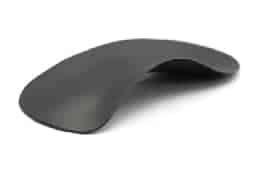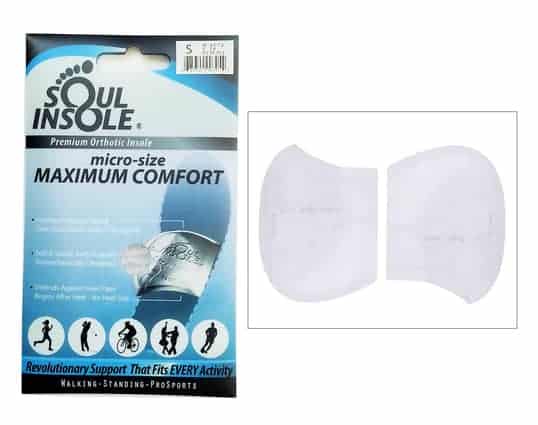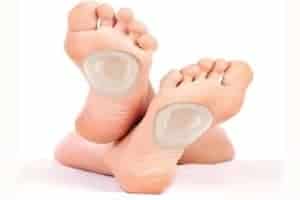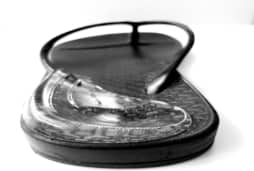Your feet may have started to ache at the end of a long day on your feet. Or maybe it has gotten to the point where you’re experiencing so much pain in your feet that you don’t even want to get out of the house. Through talking to friends and family or asking doctor google, you’ve realized it’s time to look into orthotics.
Choosing the right pair of orthotics isn’t always as simple as it sounds. As far as orthotics are concerned, they are used in cases of plantar fasciitis, morton’s neuroma, over-pronation, over-supination, heel pain, flat feet, high arches, fat pad atrophy….the list goes on!
Also, different orthotics can be better for different types of shoes. For instance if a shoe has a thick removable footbed, this original footbed can be removed and replaced by a full length orthotic. Other shoes and sandals do not have removable footbeds and will need smaller sized adhesive orthotics for optimal fit and function. As long as you have the right orthotic for your foot type, foot ailment, and for your shoe type, you will be set up for success in improving your foot health.
There are multiple shoe/orthotic combinations for any situation and knowing what are your options are is the best way to come up with the combination that’s right for you.
What are the benefits of Orthotics?
Whether you want to go trail running, hiking, walking through the park, standing long hours at work or any other daily activity that you’re on your feet, orthotics can be extremely beneficial. Below, we have listed a number of general benefits that orthotics have.
1. Arch support
The first benefit that orthotics have is the arch support that they provide. By supporting the arches of the feet, this helps to stop the arches from dropping, collapsing and the possible micro-tears that can happen in the connective tissue (plantar fascia).
When the arches are in proper alignment, this also helps to keep the ankles, knees, hips and back in better alignment as well, improving your overall gait, balance and posture.
2. Practicality
Orthotics can be used for a wide variety of activities. Whether you walk and stand at work or you like to run marathons, a pair of orthotics will make a huge difference in your level of comfort during and after the activity.
3. Pressure Relief
Another benefit of orthotics is that they can relieve pressure from your heel and forefoot. When there is a gap under your arch, the entirety of your body weight is concentrated on your heels and the forefoot aka “ball of your foot”. When you wear a pair of orthotics that have good arch support, this distributes the pressure more evenly across the entirety of your foot. This takes the pressure of the 2 common pain point areas.
4. Comfort and Impact Absorption
Some orthotics also have cushioning which helps add comfort and provides impact absorption. This feature can help prevent a number of health conditions that result from having too much pressure on the heels or forefoot like neuromas and heel spurs. Orthotics are real game changers in protecting your feet.
Custom vs. Over-The-Counter?
It can be stressful deciding whether to go to the podiatrist, pay for the co-pay for the initial visit, a second visit for casting and the additional cost of the custom orthotic which can range from $200-$600. The costs for orthotics are often not covered by insurance, but check with your plan to see if yours will cover it!
The good thing is that research has shown that the non-prescription orthotics can be as helpful as custom orthotics for certain conditions and the price point is closer to $20-$100.
For example, a 2014 study in Musculoskeletal Care, found that people with plantar heel pain who wore over-the-counter orthotics for eight weeks had the same reductions in pain and disability as their counterparts who wore custom orthotics.
Another study, in Prosthetics and Orthotics International in 2015, found that using any of the three OTC orthotics tested “would be beneficial for the treatment, or prevention, of musculoskeletal injuries such as plantar fasciitis.” Here, the American Orthopaedic Foot & Ankle Society endorses OTC inserts for heel pain.
What are orthotics made of?
Generally, there are three types of materials that orthotics are most commonly made from. These include plastic, foam and gel. Some are made fully of one type of materials, others have a combination of these materials. Some orthotics focus more on the support, others focus on cushioning and some have a good balance between these two goals.
1. Plastic Orthotics
Often designed with sturdy support in mind. They take up less space in the shoes and are often the choice for men’s dress shoes. They are durable and long lasting. They do not have impact/shock absorption. The support is often not as high as the arch of the foot.
Due to the more rigid material, the foot would not be able to tolerate a support that is equal to it’s arch height. It can also take time for the feet to adjust to the feeling of support, but over time they start feeling comfortable as they make a big difference in stopping the arches from collapsing.
2. Foam Orthotics
These orthotics can feel great from the moment you put them under your feet. They have cushioning and support and impact/shock absorption for higher impact activities like running and sports. They tend to take up more space in the shoes. Also, the foams tend to compress over a fairly short time. Once the cushioning and support has been squished down, it’s time to get a new pair.
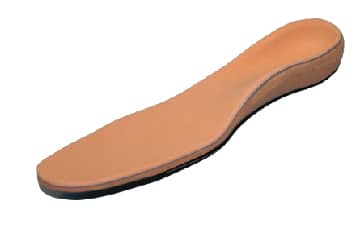
3. Gel Orthotics
These orthotics are generally made of a Silicone or Polyurethane (PU) gel. They can provide cushioning, impact absorption and support. There are a wide variety of styles and quality levels, so it is important to do your research.
Some are full length cushions, some are very small arches or support pieces for the heels or metatarsals, and there are also some high quality gel orthotics to choose from. A high quality gel doesn’t compress over time. If the gel is used for supporting the arches more aggressively, it can be very beneficial for softly raising the arch into proper alignment.
Some of these polyurethane gel orthotic devices even have an adhesive backing so that they can be placed securely into shoes and sandals, yet they are washable and moveable from shoe to shoe. One thing to note, the PU material can start off transparent in color and tends to yellow in color as they age.
We tested Soul Insole’s micro-size Maximum Comfort Orthotics. We highly recommend these Orthotics for the variety of benefits including relieving plantar fasciitis and morton’s neuroma, ease of use, fit, comfort and durability. For my personal review of the product Click Here.
A Soul Insole Gel Metatarsal Pad for Morton’s Neuroma, Sesmoiditis and ‘ball of foot’ pain.
Excessive Pronation vs. Excessive Supination:
How do you know if you over pronate vs over supinate? If you over pronate you will notice that your arches are dropping and your ankles are dropping towards the floor. Over supinators have the opposite issue. They tend to walk on the outside edges of the feet. You will often notice on the shoes of an over supinator that the outer edge of the heel will wear out very quickly.
For excessive pronation it is important to find an orthotic with posting, or just add a heel wedge for posting. Posting/Heel Wedges will be thickest at the inner edge and taper to 0.
For excessive Supination you can use heel wedges that have thickness on the outermost edge of the heel and taper to 0 towards the inside.
A Soul Insole Heel Wedge placed for excessive supination.
How to make your pair of orthotics last longer?
As we mentioned, pair of orthotics can have a cost ranging from $20 to $600. This huge range can depend on whether the insoles are customer or over the counter, the quality of materials, and the added technicalities that go into their production. That’s why you’ll want to take proper care and maintenance of your pair in order to make them last as long as possible.
Here are some tips on taking care of your orthotics:
Store in a cool, dry place
For most orthotics, it is important to avoid exposure to an excessive amount of heat. This is because many of these materials are formed through a heating process, so excessive heat is likely to damage your pair by deteriorating the shape and possible adhesives.
Wash when dirty
Pollutants that include road grime and dirt can result in the deterioration of the materials. The best way to wash most orthotics is in the sink with a little bit of hand soap (non-moisturizing). It is not recommended to put orthotics into the dryer as the heat can cause damage.
Also keep in mind that fabric softeners, bleach, and regular detergents are likely to leave a residue on the which can again damage it.
Be kind to your orthotics
While most orthotics are built strongly enough to withstand general wear and tear, it is recommended to be gentle when moving them from shoe to shoe.
Wear socks with your orthotics
Wearing socks can help to keep the sweat from getting into the orthotic materials so that you won’t need to wash them quite as often.
Guest post by: Foot Health Advice

